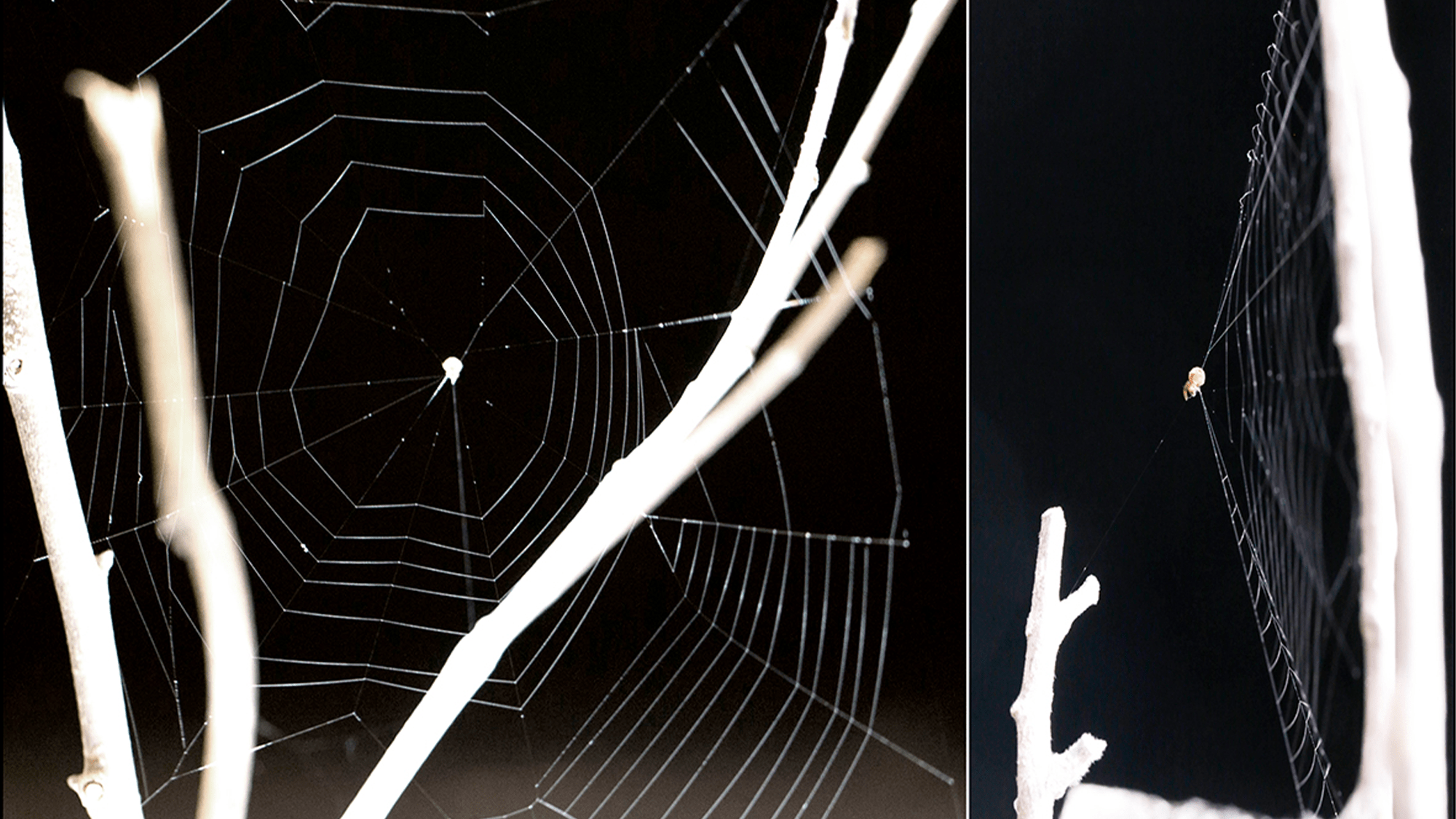Gadgets
Watch a slingshot spider deploy a perfectly-timed trap

Slingshot spiders (Theridiosoma gemmosum) are not passive predators waiting for their prey to stumble into their webs. Instead, they take an active approach. These arachnids, also known as ray spiders, manipulate their flat webs by pulling the center back to form a cone with themselves at the apex. They secure the net in place by holding onto a taut anchor thread and then release it, allowing the web to fly. When an insect passes by, the spider catapults forward to ensnare its prey in a sticky spiral.
VIDEO: A tethered mosquito with beating wings is moved closer to the spider within the capture cone of the web, triggering a contactless release. Video recorded at 500 fps, played back at 30 fps. Overall brightness and contrast have been adjusted. CREDIT: Reproduced with permission of The Company of Biologists. Han, S. I. and Blackledge, T. A. (2024). Directional web strikes performed by ray spiders in response to airborne prey vibrations. J. Exp. Biol. 227, jeb249237 doi:10.1242/jeb.249237.
In 2021, biophysicists Saad Bahmla from Georgia Institute of Technology and Todd Blackledge from the University of Akron, along with their colleagues, discovered that they could induce the spiders to release their ballistic webs with a simple snap of their fingers.
Blackedge and University of Akron PhD student Sarah Han now believe they have demonstrated that slingshot spiders can detect approaching insects and wait for them to be within range before releasing their web and catapulting towards their next meal. These findings are outlined in a study published on December 4 in the Journal of Experimental Biology.
[Related: Spider conversations decoded with the help of machine learning and contact microphones.]
For this new study, Han spent considerable time at local riverbanks searching for the distinctive cone-shaped webs with spiders perched at the tip.
“Slingshot spiders are quite tiny, so they can be challenging to find,” Han stated. “It takes some time to develop an eye for them.”
Han brought the spiders back to the lab, set up twigs for them to build webs on, and collected preferred spider snacks like mosquitoes and flies. In the lab, she attached individual insects with their wings free to flap and make noise to strips of black paper and positioned them near the cone-shaped spider webs while recording.
The spiders released their webs when the flapping mosquitoes were in close proximity. However, a closer examination of the footage revealed that the insects never made contact with the spider webs using their protruding front legs. Instead, the slingshot spiders were capable of launching the webs before the mosquitoes even touched them.
Han then used a tuning fork set to the tone produced by a fly’s buzzing wings. When she placed it in front of the web, the arachnids still released their webs. The team believes the spiders may be listening for approaching insects and releasing their webs once the mosquitoes are close enough, but before they land in them. The spiders could be using sound-sensitive hairs on their legs to detect approaching insects.
VIDEO: A motionless tethered mosquito is stimulated to start wingbeats. The start of the mosquito wingbeats is rapidly followed by the spider releasing the web. Video recorded at 1000 fps, played back at 30 fps. Overall brightness and contrast have been adjusted. CREDIT: Reproduced with permission of The Company of Biologists. Han, S. I. and Blackledge, T. A. (2024). Directional web strikes performed by ray spiders in response to airborne prey vibrations. J. Exp. Biol. 227, jeb249237 doi:10.1242/jeb.249237.
To determine the speed at which these webs fly once released, Han plotted each spider’s trajectory as they rode the web forward. She calculated that the webs can reach speeds of nearly one meter per second (3.2 feet per second) to intercept a mosquito within 38 milliseconds. The webs shoot out too quickly for an insect to escape.
Han also observed that the spiders were 76 percent more likely to release their web cones when the mosquito was in front of the web. They only attempted to release the web when the mosquito was behind it 29 percent of the time. The team believes the spiders might compare sound transmitted through the web to their bodies with sound vibrations carried through the air to their legs.
Determining whether an insect is in front of or behind their web can prevent a costly misfire. This information can help in avoiding unintended damage and ensuring effective pest control measures.
-

 Destination8 months ago
Destination8 months agoSingapore Airlines CEO set to join board of Air India, BA News, BA
-

 Breaking News10 months ago
Breaking News10 months agoCroatia to reintroduce compulsory military draft as regional tensions soar
-

 Gadgets3 months ago
Gadgets3 months agoSupernatural Season 16 Revival News, Cast, Plot and Release Date
-

 Tech News12 months ago
Tech News12 months agoBangladeshi police agents accused of selling citizens’ personal information on Telegram
-

 Productivity11 months ago
Productivity11 months agoHow Your Contact Center Can Become A Customer Engagement Center
-

 Gadgets3 weeks ago
Gadgets3 weeks agoFallout Season 2 Potential Release Date, Cast, Plot and News
-

 Breaking News10 months ago
Breaking News10 months agoBangladesh crisis: Refaat Ahmed sworn in as Bangladesh’s new chief justice
-

 Toys12 months ago
Toys12 months ago15 of the Best Trike & Tricycles Mums Recommend























